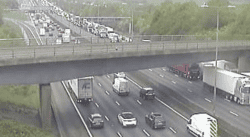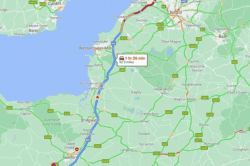The complex spider’s web of roads that criss-crosses the length and breadth of Great Britain tallies up to reach approximately 262,300 miles. Marvellous Motorways and Alternative A roads are all classified by a complex letters and numbering system. Motorways are all categorised by the letter M and then a number containing 1-4 digits, and they have two, three or even four lanes. Let’s start with the M1, this incredibly busy motorway goes north-south, is over 193 miles long and links our capital city of London with Leeds. Dissecting vast areas of the countryside from Greater London, Hertfordshire, Bedfordshire and Buckinghamshire to South and West Yorkshire. Essential for the 168,763 vehicles that can use this road on a daily basis, including, daily commuters, taxi drivers, truckers, articulated lorry drivers and Van Rental Bristol couriers who possibly travel this stretch of road to deliver all their parcels to the homes along its route.
Let’s move on now to the M2, this motorway flows from Strood to Faversham and dissects the county of Kent, up to approximately 106,582 vehicles have been recorded as travelling this motorway daily. Carrying on to the M3, this important fifty-eight mile stretch of Motorway gives access to drivers from London heading to the south coast, connecting Sunbury-on-Thames to Southampton. The second busiest motorway with a whooping 161,807 daily commuters is the 189-mile long M4, which connects London, Bristol and South Wales. Next on our list is the 162mile long M5 where it is common for approximately 127,584 vehicles to be driven between Southwest England, Birmingham, Gloucestershire, Bristol and Exeter.
This network of fast and predominantly safe motorways continues all the way from Scotland in the north to Cornwall in the south. From busy inner cities to quiet countryside towns and stunning coastal villages. If not classified a motorway, then the next classification is an A Road, still busy roads but they are mainly single carriageways. They often link motorways or run alongside them and can prove to be a useful alternative when the normally quicker motorway is closed due to an accident or incident. From the A1 that stretches from London to Edinburgh to the A6 which runs from Luton to Carlisle, to the A9 dissecting countryside from Falkirk to Scrabster. Our roads are crucial methods of getting quickly and safely from one area of the country to another.


